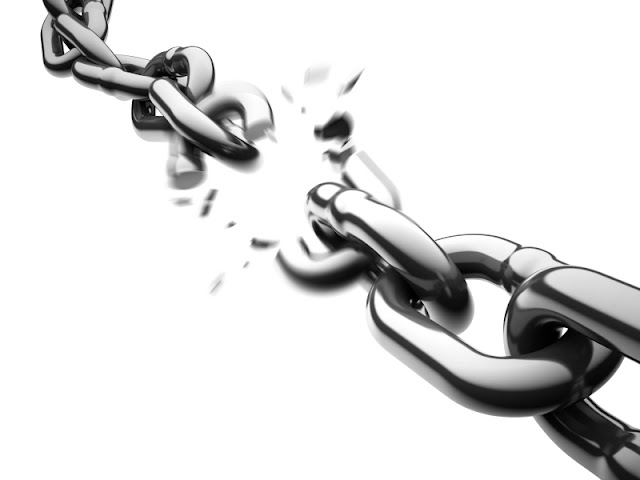It was never going
to be easy, but central banks in the world’s two largest economies – the United
States and China – finally appear to be embarking on a path to policy
normalization. Addicted to an open-ended strain of über monetary accommodation that
was established in the depths of the Great Crisis of 2008-2009, financial
markets are now gasping for breath. Ironically, because the traction
of unconventional policies has always been limited, the fallout on real
economies is likely to be muted.
The Federal
Reserve and the People’s Bank of China are on the same path, but for very
different reasons. For Fed Chairman Ben Bernanke and his colleagues, there
seems to be a growing sense that the economic emergency has passed, implying
that extraordinary action – namely, a zero-interest-rate policy and a
near-quadrupling of its balance sheet – is no longer appropriate. Conversely,
the PBOC is engaged in a more pre-emptive strike – attempting to ensure
stability by reducing the excess leverage that has long underpinned the real
side of an increasingly credit-dependent Chinese economy.
Both actions are
correct and long overdue. While the Fed’s first round of
quantitative easing helped to end the financial-market turmoil that occurred in
the depths of the recent crisis, two subsequent rounds – including the current,
open-ended QE3 – have done little to alleviate the lingering pressure on
over-extended American consumers. Indeed, household-sector debt is still in
excess of 110% of disposable personal income and the personal saving rate remains below 3%,
averages that compare unfavorably with the 75% and 7.9% norms that prevailed,
respectively, in the final three decades of the twentieth century.
With American
consumers responding by hunkering down as never before, inflation-adjusted
consumer demand has remained stuck on an anemic 0.9% annualized growth
trajectory since early 2008, keeping the US economy mired in a decidedly subpar
recovery. Unable to facilitate balance-sheet repair or stimulate real
economic activity, QE has, instead, become a dangerous source of instability in
global financial markets.
With the drip-feed
of QE-induced liquidity now at risk, the recent spasms in financial
markets leave little doubt about the growing dangers of speculative excesses
that had been building. Fortunately, the Fed is finally facing up to the
downside of its grandiose experiment.
Recent
developments in China tell a different story – but one with
equally powerful implications. There, credit tightening does not follow from
determined action by an independent central bank; rather, it reflects an
important shift in the basic thrust of the state’s economic policies. China’s
new leadership, headed by President Xi Jinping and Premier Li Keqiang, seems
determined to end its predecessors’ fixation on maintaining a rapid pace of
economic growth and to refocus policy on the quality of growth.
This shift not
only elevates the importance of the pro-consumption agenda of China’s 12th
Five-Year Plan; it also calls into question the longstanding proactive
tactics of the country’s fiscal and monetary authorities. The policy
response – or, more accurately, the policy non-response – to the current
slowdown is an important validation of this new approach.
The absence of a
new round of fiscal stimulus indicates that the Chinese government is satisfied
with a 7.5-8% GDP growth rate – a far cry from the earlier addiction to growth
rates around 10%. Butslower growth in China can continue to sustain
development only if the economy’s structure shifts from external toward
internal demand, from manufacturing toward services, and from
resource-intensive to resource-light growth. China’s new leadership has not
just lowered its growth target; it has upped the ante on the economy’s
rebalancing imperatives.
Consistent with
this new mindset, the PBOC’s unwillingness to put a quick end to the June
liquidity crunch in short-term markets for bank financing sends a strong signal
that the days of open-ended credit expansion are over. That is a
welcome development. China’s private-sector debt rose from around 140% of GDP
in 2009 to more than 200% in early 2013, according to estimates from Bernstein
Research – a surge that may well have exacerbated the imbalances of an already
unbalanced Chinese economy.
There is good
reason to believe that China’s new leaders are now determined to wean the
economy off ever-mounting (and destabilizing) debt – especially in its rapidly
expanding “shadow banking” system. This stance appears to
be closely aligned with Xi’s rather cryptic recent comments about a “mass line”
education campaign aimed at addressing problems arising from the “four winds”
of formalism, bureaucracy, hedonism, and extravagance.
Financial markets
are having a hard time coming to grips with the new policy mindset in the
world’s two largest economies. At the same time,
investors have raised serious and legitimate questions about Japan’s
economic-policy regime under Prime Minister Shinzo Abe, which unfortunately
relies far more on financial engineering – quantitative easing and yen
depreciation – than on a new structural-reform agenda.
Such doubts are
understandable. After all, if four years of unconventional monetary
easing by the Fed could not end America’s balance-sheet recession, why should
anyone believe that the Bank of Japan’s aggressive asset purchases will quickly
end that country’s two lost decades of stagnation and deflation?
As financial
markets come to terms with the normalization of monetary policy in the US and
China, while facing up to the shortcomings of the BOJ’s copycat efforts, the
real side of the global economy is less at risk than are asset prices. In
large part, that is because unconventional monetary policies were never the
miracle drug that they were supposed to be. They added froth to financial
markets but did next to nothing to foster vigorous recovery and redress
deep-rooted problems in the real economy.
Breaking bad
habits is hardly a painless experience for liquidity-addicted investors. But better
now than later, when excesses in asset and credit markets would spawn new and
dangerous distortions on the real side of the global economy. That is exactly
what pushed the world to the brink in 2008-2009, and there is no reason why it
could not happen again.

No comments:
Post a Comment